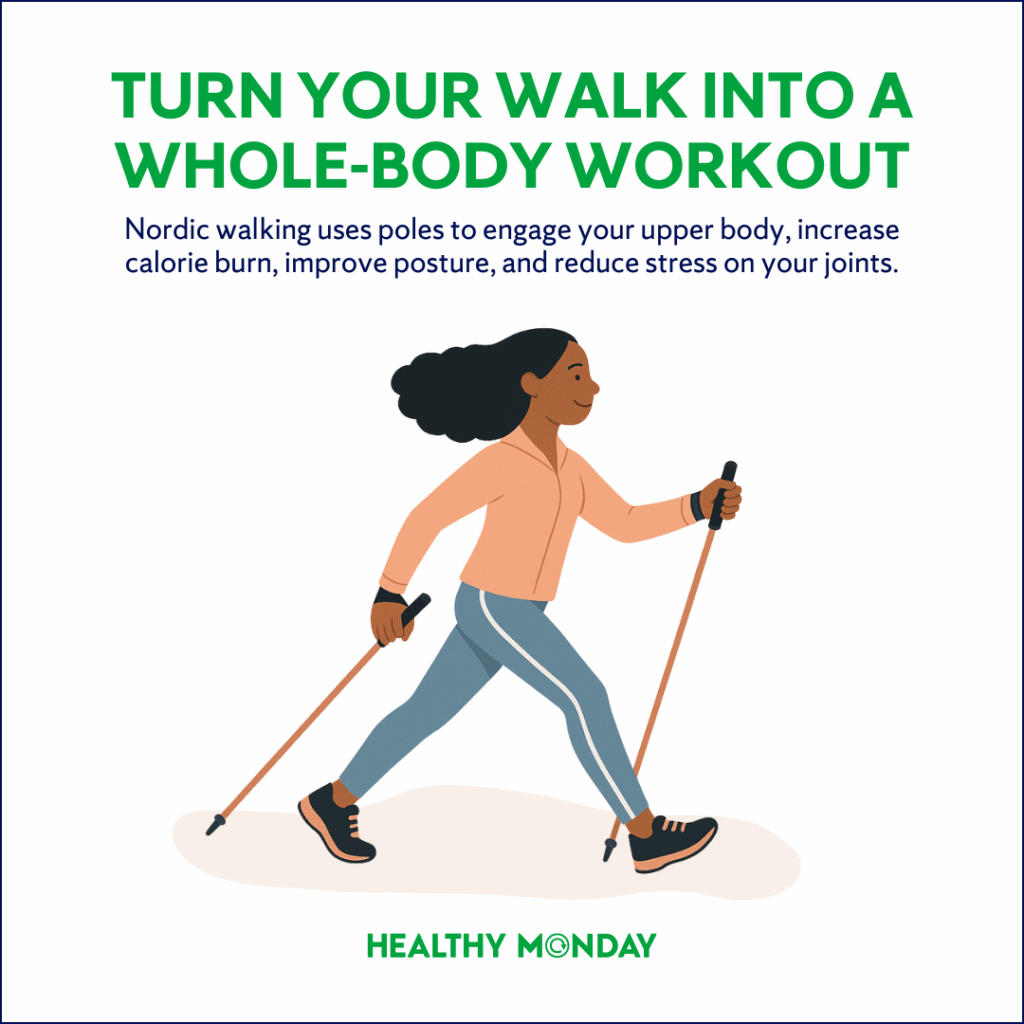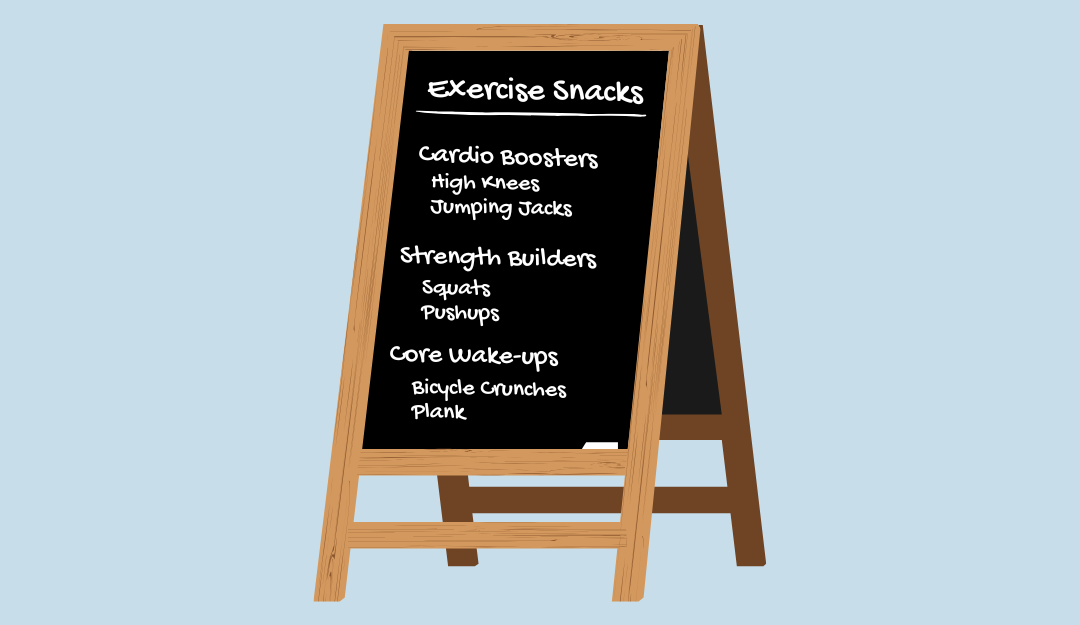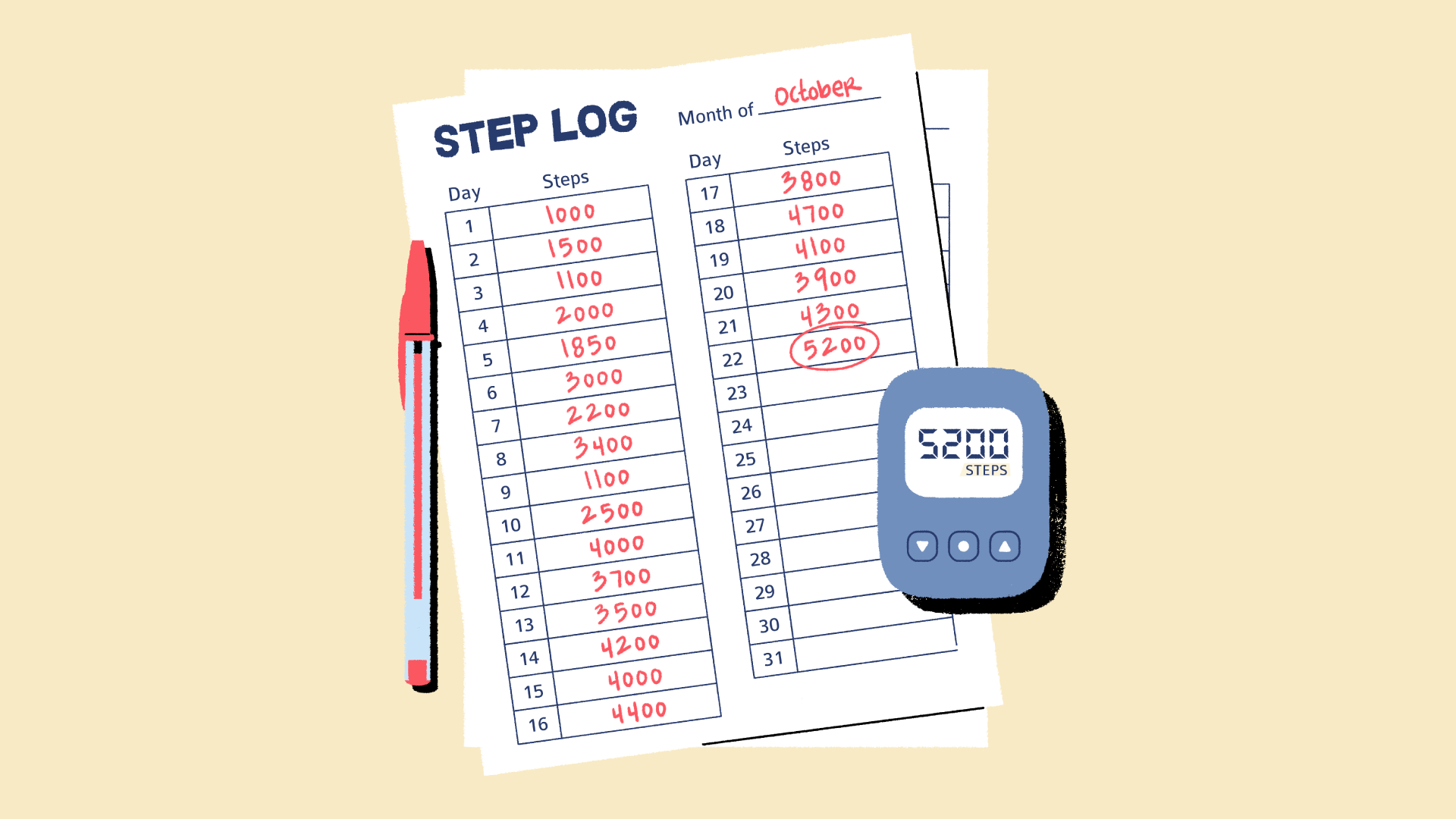Shake Up Your Stroll with Nordic Walking
Want to add a little variety to your walking routine? Nordic walking, which began in Finland as off-season training for cross-country skiers, uses lightweight poles to work your arms, shoulders, chest, and core along with your legs. The result: more muscle activation, a higher calorie burn, better posture, and less strain on your joints.

A Fresh Twist on a Healthy Habit
If walking is already part of your Healthy Monday routine, Nordic walking is a simple way to add variety and intensity without straining your body. You can do it almost anywhere you’d take a normal walk, like sidewalks, park paths, neighborhood loops, or trails. The poles add an extra layer of strength training and balance work, turning each step into a more complete workout while still keeping the low-impact nature you love about walking.
Benefits of Nordic Walking
1. More muscle activation
You’ll engage 80-90% of your muscles, compared to about 50-70% with regular walking.
2. More calories burned
Studies show an 18–67% increase in calorie burn compared to walking without poles.
3. Better posture and balance
The poles help extend your strides, improve balance, and distribute impact away from your knees, hips, and feet.
4. Better endurance and mood
A 2022 study in the Canadian Journal of Cardiology found that people with heart disease who Nordic walked two to three times per week for 12 weeks improved endurance and quality of life, and reduced symptoms of depression.
5. Heart-health boost
A 2013 review found that Nordic walking can improve blood pressure, resting heart rate, and aerobic capacity, especially in people managing chronic conditions.
Nordic walking can be especially beneficial for older adults. The poles encourage a longer stride, help prevent the shuffling gait that can lead to falls, and improve balance. By redistributing impact away from the hips, knees, and feet, it provides a joint-friendly way to stay mobile, strong, and confident.
How to Get Started
The first step is making sure you have the right equipment. Nordic walking poles are different from trekking poles, which are meant for hiking and vertical climbs. Nordic poles have angled tips and comfortable wrist straps that let you briefly open your hand without losing the pole. Choose an adjustable pair so you can set them to the right height. When you’re holding the grips, your elbows should bend at about ninety degrees. Look for poles with removable rubber tips for pavement and bare tips or spikes for dirt paths or grass.
When you’re ready to try the technique, start by standing tall, with your shoulders relaxed, chest open, and eyes looking forward. Let the poles rest at your sides with the tips behind your feet. As your left foot steps forward, swing your right pole forward and plant the tip roughly in line with your left heel, angled slightly backward. The poles should help you take a slightly longer, more deliberate stride than usual, which opens up your posture and engages more muscles. As you move past the planted pole, press through the strap to push it behind you, then release your grip slightly at your hip and swing it forward again.
Repeat the same motion on the opposite side—right foot with left pole—so that your arms and legs work in an alternating pattern, just like your natural walking stride. Give yourself time on flat ground to find a comfortable rhythm before taking the technique to hills or uneven paths. Once you have the technique down, you can pick up your pace, add short bursts of speed, and bring the poles to your favorite routes.
This Monday, give Nordic walking a try.
It’s a small change that can make a healthy habit even more rewarding, helping you move better, feel stronger, and stay active for years to come.


